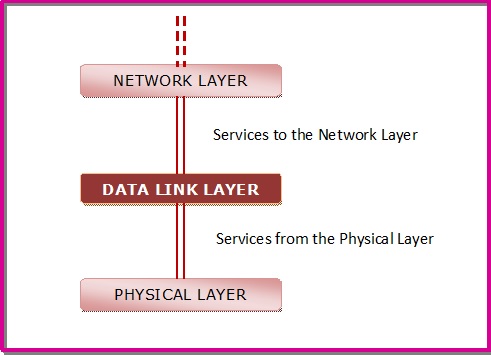The data link layer in the OSI (Open System Interconnections) Model, is in between the physical layer and the network layer. This layer converts the raw transmission facility provided by the physical layer to a reliable and error-free link.
The main functions and the design issues of this layer are
- Providing services to the network layer
- Framing
- Error Control
- Flow Control
Services to the Network Layer
In the OSI Model, each layer uses the services of the layer below it and provides services to the layer above it. The data link layer uses the services offered by the physical layer.The primary function of this layer is to provide a well defined service interface to network layer above it.

The types of services provided can be of three types −
- Unacknowledged connection less service
- Acknowledged connection-less service
- Acknowledged connection - oriented service
Framing
The data link layer encapsulates each data packet from the network layer into frames that are then transmitted.
A frame has three parts, namely −
- Frame Header
- Payload field that contains the data packet from network layer
- Trailer

Error Control
The data link layer ensures error free link for data transmission. The issues it caters to with respect to error control are −
- Dealing with transmission errors
- Sending acknowledgement frames in reliable connections
- Re-transmitting lost frames
- Identifying duplicate frames and deleting them
- Controlling access to shared channels in case of broadcasting
Flow Control
The data link layer regulates flow control so that a fast sender does not drown a slow receiver. When the sender sends frames at very high speeds, a slow receiver may not be able to handle it. There will be frame losses even if the transmission is error-free. The two common approaches for flow control are −
- Feedback based flow control
- Rate based flow control










0 comments:
Post a Comment